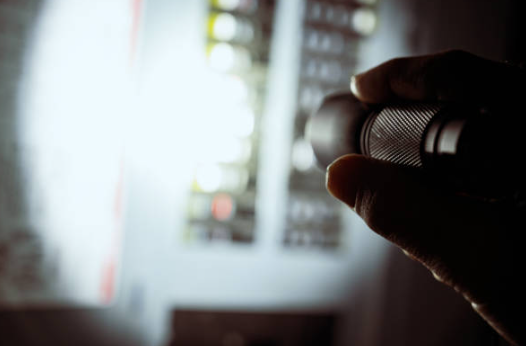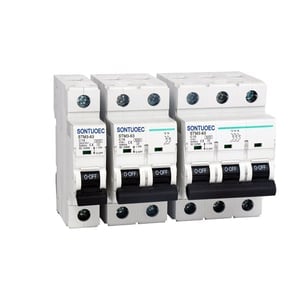Before troubleshooting begins, you must familiarize yourself with circuit breakers.
Serving as safety devices, circuit breakers are designed to stop electricity flow when overloads or short-circuits occur and "trip", protecting both yourself and the rest of the electrical network from fire hazards or other damages caused by overload or short circuits.
Circuit breakers vary in types, but you can simply get standard, ground-fault(GFCI), Arc-Fault(AFCI) and combination AFCI circuit breakers with a top-notch circuit breaker supplier quickly and easily.
Related Reading: How to identify circuit breaker type
How to Find the Main Causes of Circuit Breaker Tripping

1. Circuit Identification
To pinpoint the problematic circuit, follow these steps:
- Turn off all appliances and lights.
- Reset the main circuit breaker by switching it on and off several times.
- Turn on each circuit one at a time until one causes the main breaker to trip. Identifying the specific circuit allows for a more targeted approach to troubleshooting.
2. Examine Your Circuits for Overloading
Overloading is a common reason for circuit breakers to trip. Each circuit is designed to handle a certain electrical load (measured in amps). Connecting too many high-power devices to a single circuit can exceed its capacity, causing the breaker to trip. To mitigate this:
Distribute devices across multiple circuits to balance the load more evenly.
3. Search for Short Circuits
A short circuit, a result of two "hot" wires touching, creates a surge that can lead to fires or excessive heat. Inspect outlets, switches, and cords associated with the tripping circuit for any signs of damage or wear that could indicate a short circuit.
4. Check for Faulty Appliances
Faulty appliances can also trip circuit breakers. To test:
- Unplug the appliance and reset the circuit breaker.
- If the breaker doesn't trip with the appliance unplugged, the appliance may be the issue. In such cases, professional inspection and repair are advised.
5. Examine Outdoor Electrical Components
Outdoor electrical components exposed to moisture can cause short circuits, leading to breaker trips. Inspect outdoor lights, outlets, and extension cords for damage and consult a professional for repairs or waterproofing solutions.
Fixing the Problem of Tripped Circuit Breaker

After identifying the cause of frequent tripping, follow these steps to address the issue:
-
Redistribute Power Load: Plug high-energy appliances into separate circuits to prevent overloading.
-
Repair or Replace Damaged Wiring: If a short circuit is suspected, repairing or replacing damaged wires can solve the problem. This task should be performed by a professional electrician.
-
Inspect and Repair Faulty Appliances: Disconnect and inspect appliances for faults. Seek professional repair services for any defective appliances.
-
Upgrade Your Electrical System: If your electrical demands have increased, consider upgrading your circuit breaker panel to accommodate the additional load.
Bonus: Expert Advice on Circuit Breakers

If troubleshooting doesn't resolve the issue, or if you're unsure of the cause, professional help is essential. An electrician can conduct a comprehensive assessment of your electrical system, identify the root cause, and perform necessary repairs.
Regular electrical maintenance is also recommended to keep your system in optimal condition and prevent future issues.
To Sum Up
When faced with frequent circuit breaker tripping, adopting a systematic approach to identify and fix the underlying problem is crucial. Understanding how to manage circuit overload, detect short circuits, and deal with faulty appliances are key steps in maintaining a safe and reliable electrical system.
However, when in doubt, seeking professional assistance is the best course of action. Following these guidelines can help ensure your electrical system functions smoothly, keeping you safe and free from interruptions.





